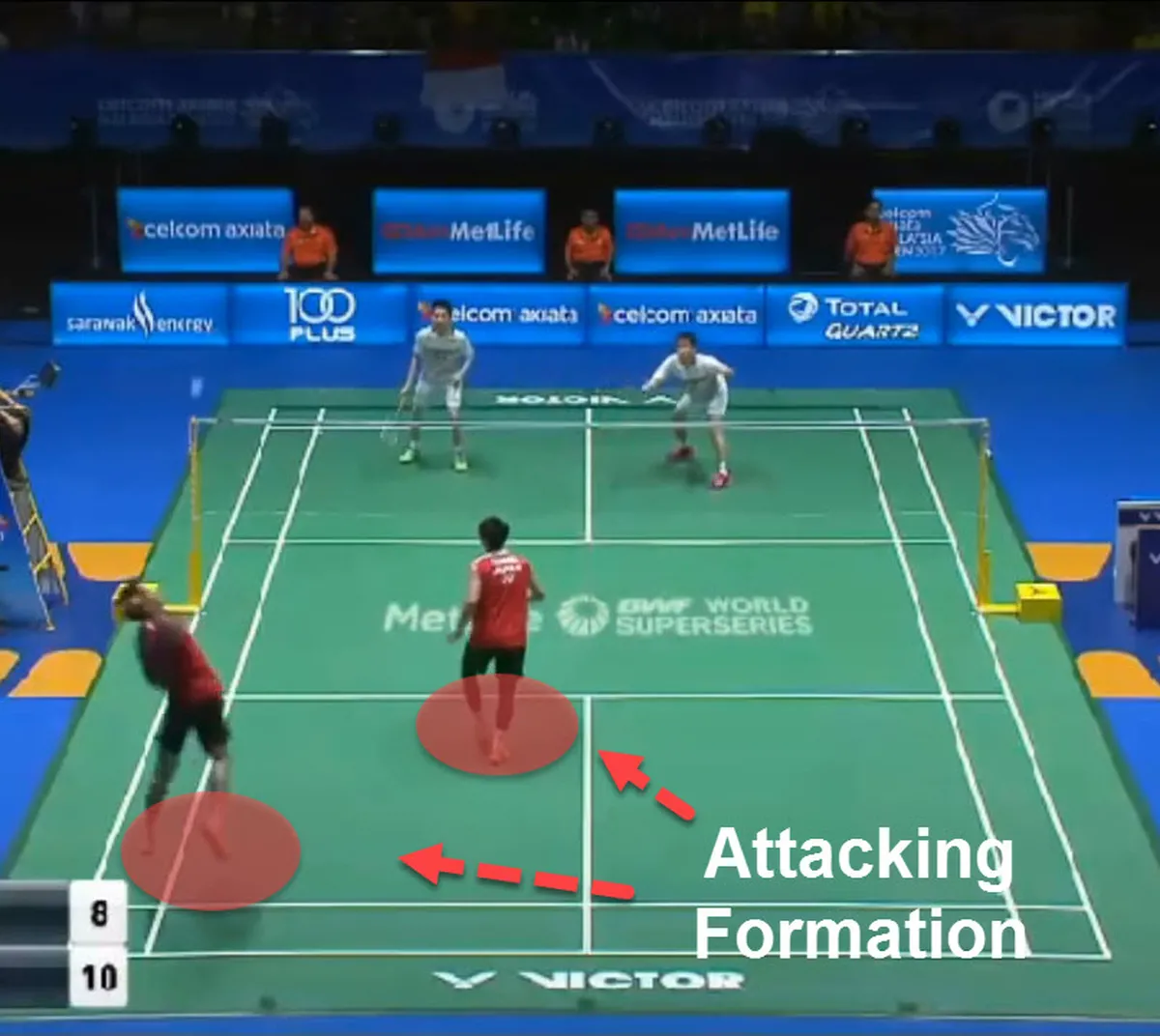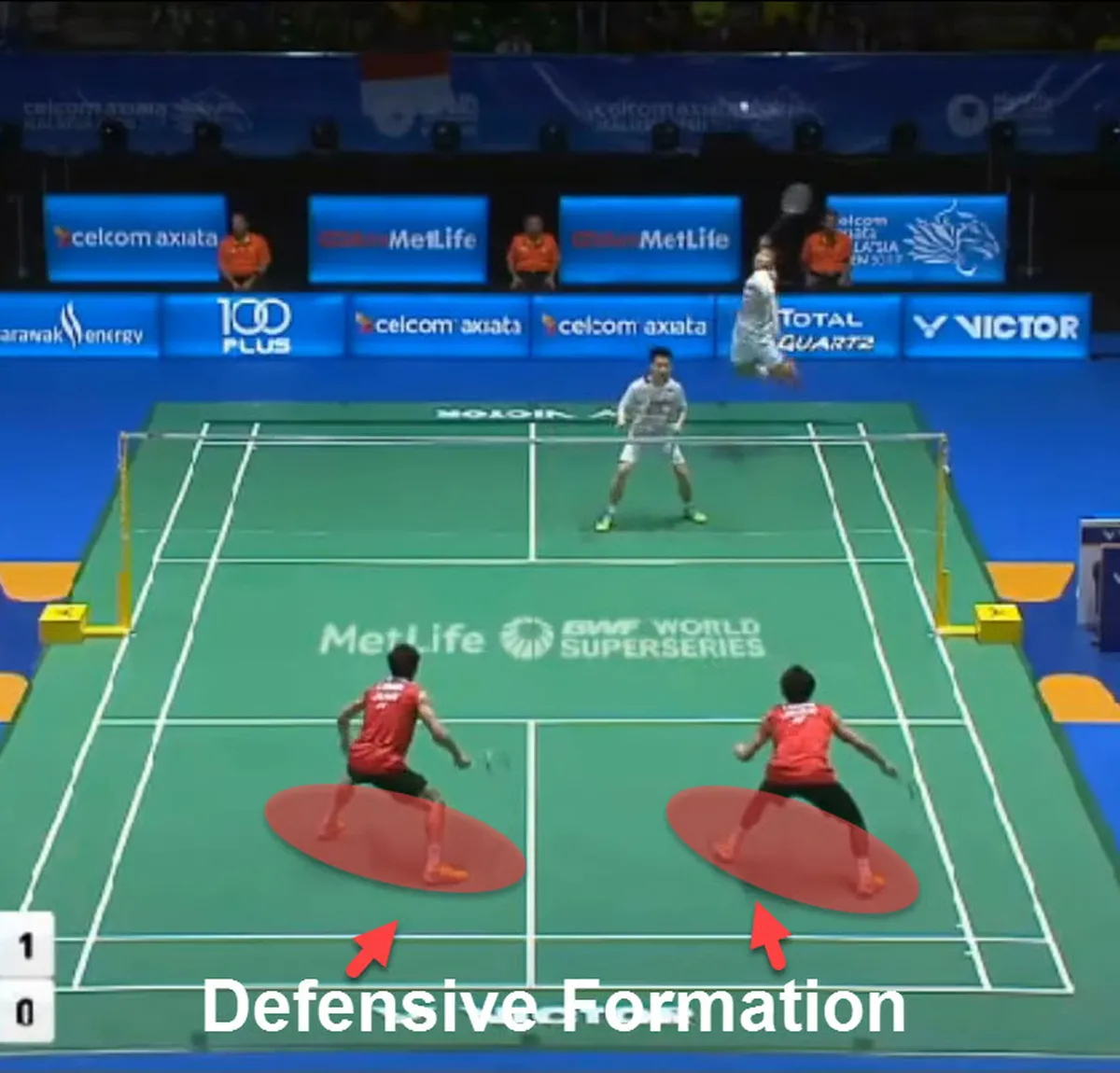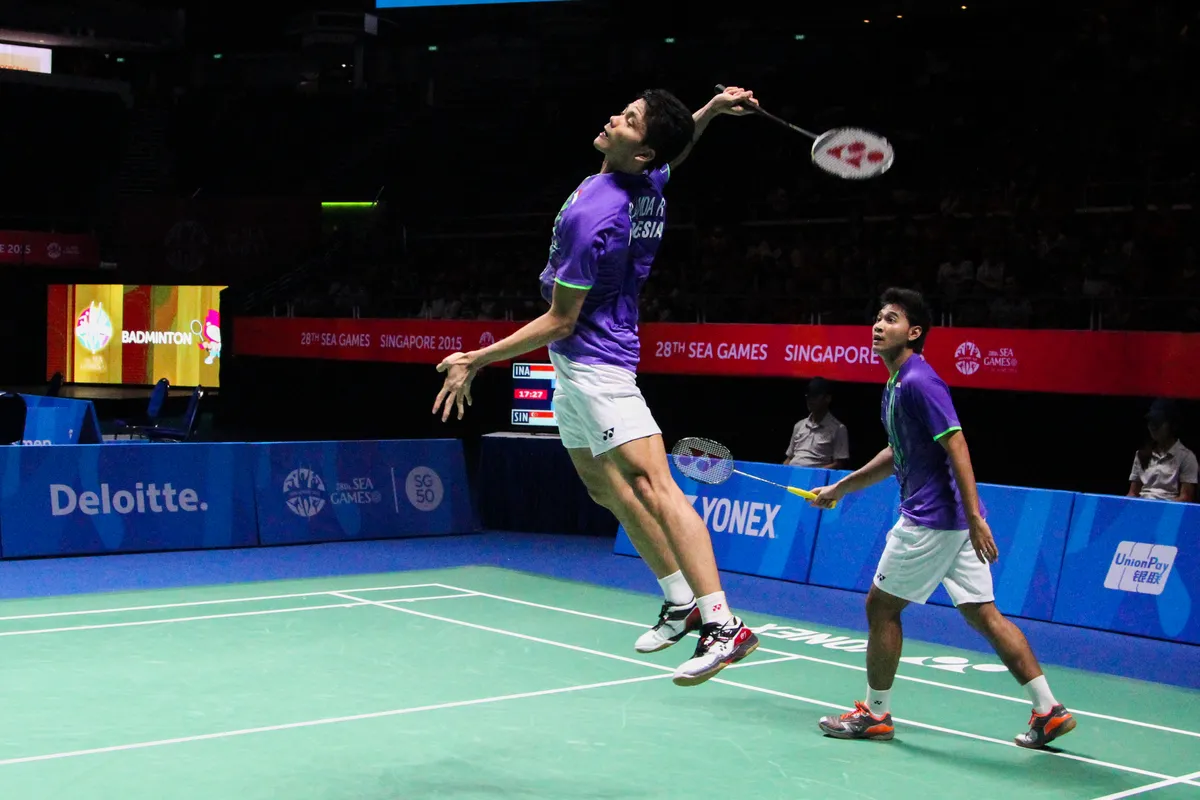Let’s get right to it. There are 3 steps to winning badminton doubles.
Step 1: Serve well
Step 2: Have the right formation
Step 3: Communicate
And really that’s it. From my 15 plus years playing badminton doubles, those 3 steps are the basics to winning most badminton games at the club level.
Now, each one of these 3 steps has nuances and requires elaboration.
In this post I’m going to focus on the second step – having the right formation. Why? Because having and maintain the right formation is the quickest and simplest thing that you can do that will win you more doubles games. Also, communicating with your partner beforehand, and during the match about your formation helps with communication and knowing where to place your shots in order to win more rallies.
What about your service shot? Yes, it’s extremely important to get it right. And it’s one of the most neglected parts of the game. Especially the short serve – which you use about 90% + of the time in badminton doubles (there is a formation goal why this is so).
If you can’t serve well, you’ll never win a game.
Learning how to play the short serve takes time, and there’s a lot of drills that you can use to master this crucial shot. That’s why I’m going to write a separate detailed guide on the badminton serve (I don’t want this post to be too long). Watch this space.
Badminton Doubles Formation(s)
Where you and your partner stand during a badminton doubles game is crucial to winning rallies. I find that at the club level, there is a lack of a basic understanding about position and formation when playing badminton doubles.
There are basically 2 formations: attacking and defending.
The movement from one to another is fluid and happens multiple times during a badminton doubles rally. And it depends on the position of the shuttle in the court. In the attacking formation the players are front and back, in the defense formation the players are side to side. Let’s look at each of these formations.
Attacking Doubles Formation

As a doubles team, you should take an attacking formation when your opponent has hit the shuttle into your backcourt or forecourt. If the shuttle has been hit high into the backcourt, the backcourt expert in your team moves to the backcourt and returns the shuttle, with a smash or a net drop.
Your frontcourt player moves to the midcourt (a more advanced position is a little bit to the side where the birdie has been returned – follow the shuttle!) and covers the forecourt and the midcourt.
What happens if the birdie has been hit into your midcourt? Then it gets a little complicated. If the shuttle has been hit into the midcourt side tramlines, I recommend you take a modified attacking formation where the backcourt player moves slightly into the midcourt on the opposite side of the court.
Defensive Doubles Formation
You should take the defensive position whenever you return the shuttle into the opponents’ midcourt and backcourt. Remember that in the defensive formation, both you and your partner are positioned in the midcourt – side by side. This enables you to easily return smashes and drop shots.

The moment your opponent returns the shuttle high into your midcourt (btw this should be the end of the rally) and backcourt, you should take an attacking formation.
How to Win Doubles Badminton Rallies
As you may have realized, you want your opponent to make a return into your midcourt. Because, that give you a good chance to make a kill shot! And finish the rally.
The converse is also true, you don’t want to return the shuttle into the opponents’ midcourt – unless it a powerful smash (I aim for the spot between the players). If you have to return the birdie into the opponents’ midcourt – aim for the side tramlines.
Try and go on the attack as much as possible.
This means that you want to make your opponents’ return the shuttle into the forecourt or backcourt. High returns into the backcourt should be avoided as they’ll give the attacking impetus to the opposing team. Obviously, it’s better to make a high return into the backcourt rather than the midcourt.
Finally, we’ve not talked about rotation. Here’s why. It’s very hard to come across a club level doubles badminton team where both players are all rounded. That is, they are comfortable playing doubles in the backcourt and frontcourt.
So, while professional badminton players rotate constantly between the backcourt and frontcourt, this is not possible at the club level. One member of the team will likely gravitate towards the backcourt or the frontcourt (BTW, this also determines their badminton doubles racket choice).
Professional players also have their preferences, but they’re less pronounced than club players – and they have advanced rotations strategies that get them back to their preferred part of the court within a couple of rallies.
Which brings me to my last tip on how to win badminton doubles rallies, try and rotate your opponents. You’ll want to push the frontcourt player into the backcourt and pull the backcourt player into the frontcourt.
This works very well in mixed doubles where the male member of the team is the predominately backcourt player and the lady is the predominant forecourt player. And in mixed doubles I win a lot of rallies by first getting the opposing team into a defensive position. Once they are rooted side by side, I return a drop shot to the side covered by the gentleman and then a backcourt return into the farthest corner. That’s usually the end of the rally!
That’s all for today. Keep a lookout for the next post on badminton serves. If you have any questions, or suggestions please leave a comment below.


Leave a Reply